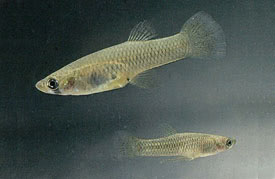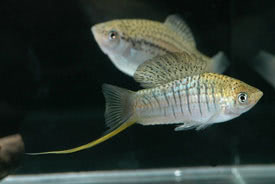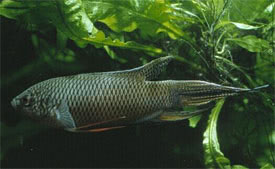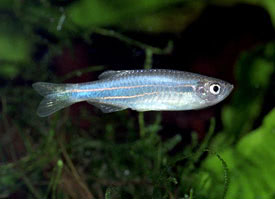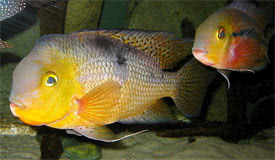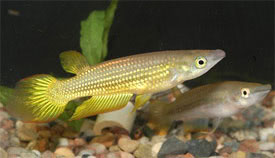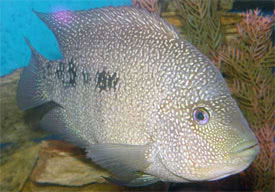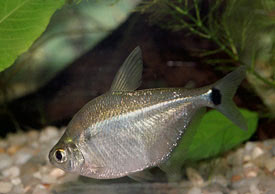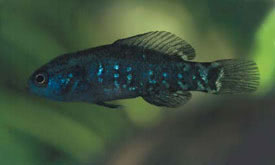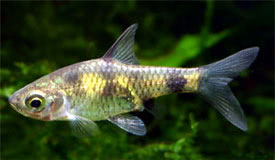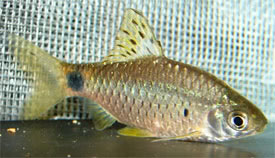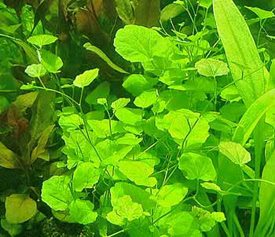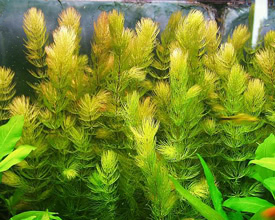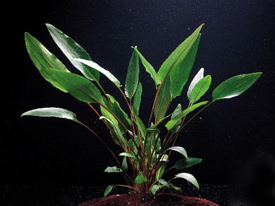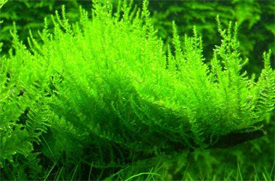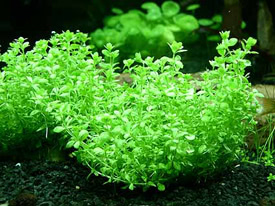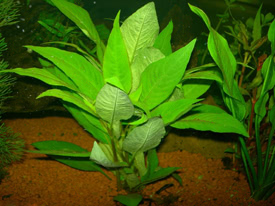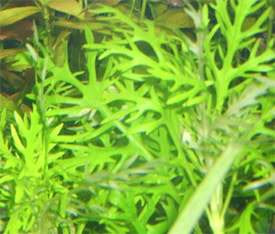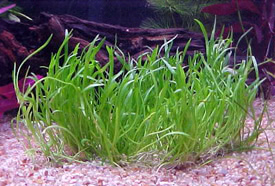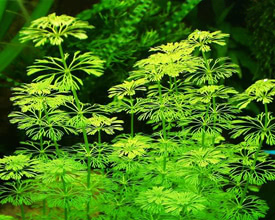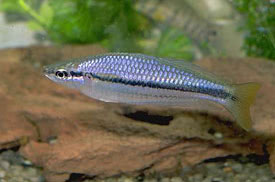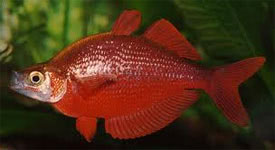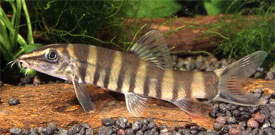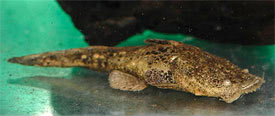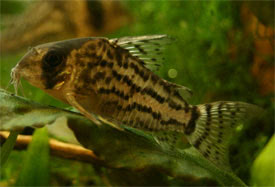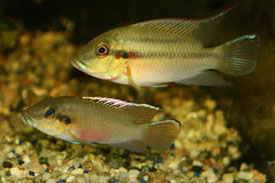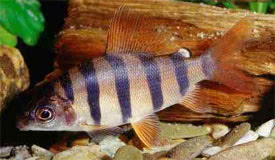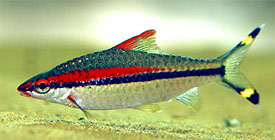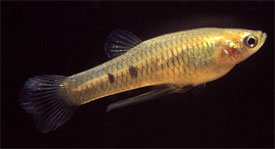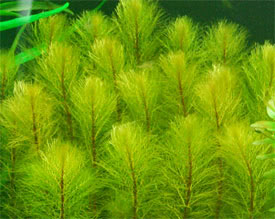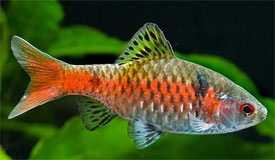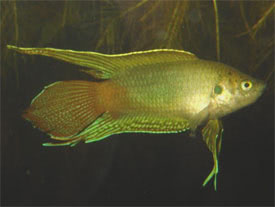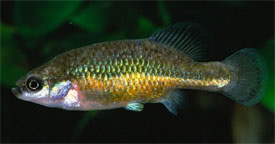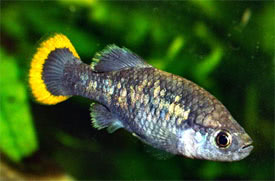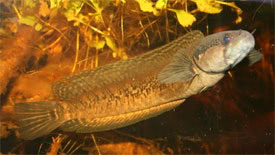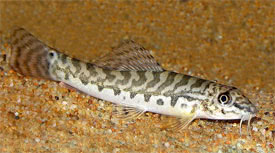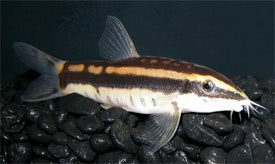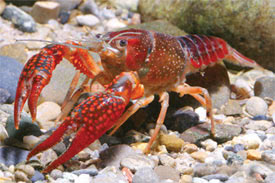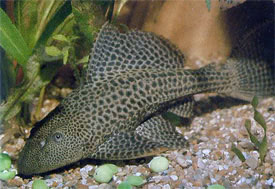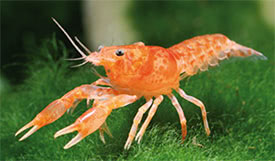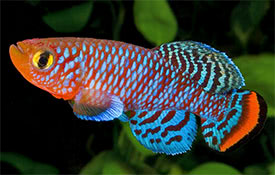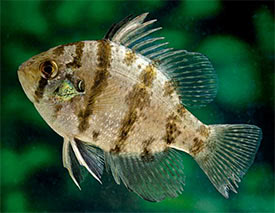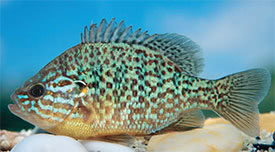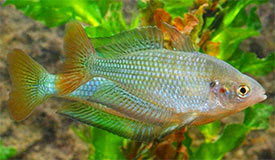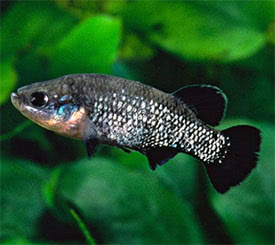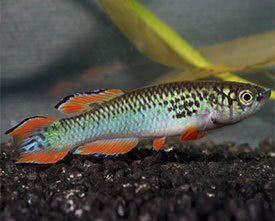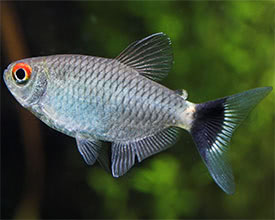
 Magyarul / Hungarian
Magyarul / Hungarian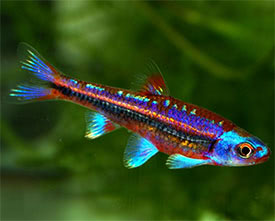

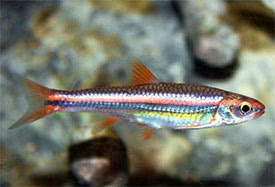
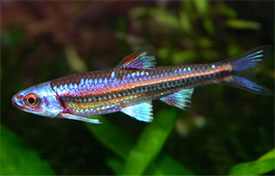
- Scientific name: Notropis chrosomus
- Synonyms: Hybopsis chrosomus (Jordan; 1877)
- Common name: Rainbow Shiner
- Group: Other fishes
- Habitat: North America; the south east of the USA: Alabama, Georgia, Tennessee.
- Size: 5-8 cm
- Biotope: Found in small, clearwater rivers and creeks with a moderate water-flow.
- Social behavior: A peaceful, active shoaling fish, that need to be kept in a small group of at least 6 species. Can be kept with other fish that have similar requirements.
- Diet: Omnivorous; In nature it feeds on small invertebrates and plant matter drifting past in the current. In aquarium it will eat live, frozen and flake foods too.
- Breeding: Quite easy
- Tank: Minimum 150 litres
- Population: 6 fish for 200 litres
- Decoration: They require a moderate water-flow and sufficient swimming space. The tank can be decoreated with driftwood and water-worn rocks. The substrate can be sand or small gravel. They leave plants untouched, so many aquascapers keep them in planted tanks.
- Temperature: 4-26 °C
- pH: 6.5-7.5
- Hardness: 5-25 NK°
- Lifespan: 3-5 years
Description: The Rainbow Shiner have an elongated, streamlined body. They are very colorful fish, outside of breeding they have pinkish bodies with a bright golden band along the midline from the gill cover to the base of the tail. The dorsal, anal, and pelvic fins of the males are bluish, while in females the fins are marked with red or orange blotches. During breeding the males develop a reddish-purple band above the silvery midline band, and a light blue band below it, while their head and back become purple and their nose turns red. Their maintenance is not difficult provided the water does not get too warm during summer.
Males are slimmer and more brightly colored than females. In the wild they spawn in early summer months of May or June, when the water temperature is around 16-25 °C. They become sexually mature at one year of age. During spawning the males become territorial and defend nests made on the fine gravel substrate. The parents do not tend the eggs, and they should be removed from the tank as they will eat the eggs. The fry can be fed with liquid fry food and newly-hatched brine shrimps.




